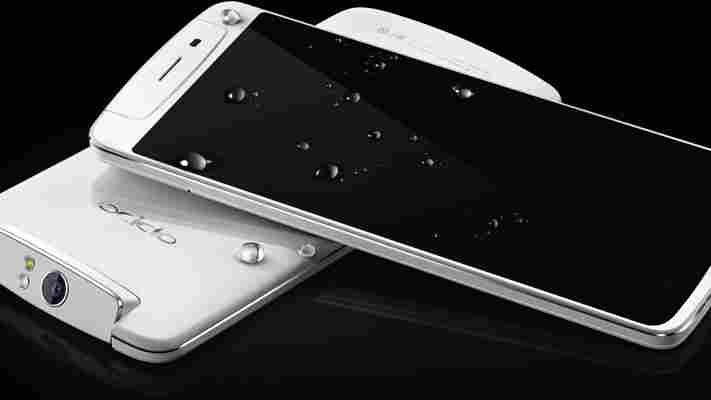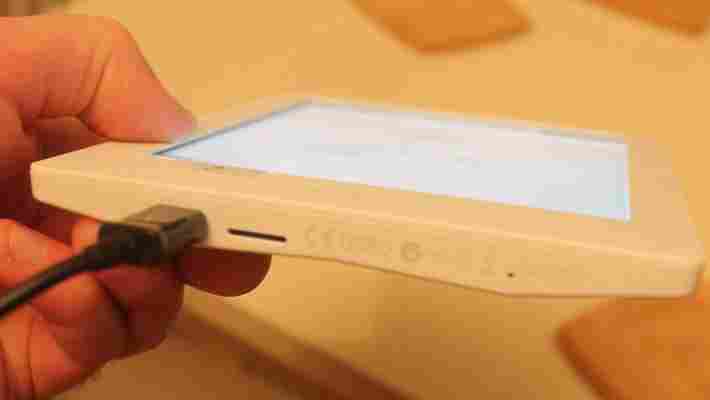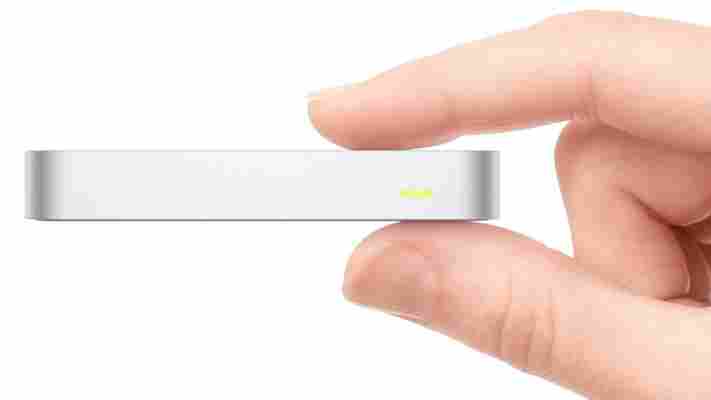The first device running CyanogenMod out of the box, the popular and custom Android firmware developed by Cyanogen Inc , has been approved by Google and will go on sale December 24, CyanogenMod developer Koushik Dutta announced in a Google+ update today.

The Oppo N1 CyanogenMod 10.2 has officially passed Google’s compatibility test — or what is known as the CTS and CDD certification programs, CyanogenMod head moderator and community staff Abhisek Devkota says in a Google Groups update , as spotted first by Engadget .
Oppo’s N1 smartphone became the first to have a version with the CyanogenMod firmware pre-installed on it. The standard N1 model runs Color OS out of the box, Oppo’s latest take on Android version 4.2.2, and users had to set up CyanogenMod via another process.
TNW goes hands-on with the new limited edition Kobo Aura HD [photos]
Earlier this evening, Kobo launched its all-new Aura HD , a limited edition ereader for ‘the passionate book lover’.

Going on sale on pre-order tomorrow (April 16, 2013), TNW managed to get a hands-on with Kobo’s new device, which features a 6.8″ E Ink display and is geared towards those really passionate about their reading, according to Kobo CEO Michael Serbinis.
“From the beginning, Kobo has pushed the ereading industry to new heights and today is no exception,” he says. “Kobo Aura HD is designed for the most passionate booklovers – those who devour hundreds of stories each year – who asked us to create the ultimate ereading experience. Kobo Aura HD is our way of celebrating these customers.”
Indeed, while no precise timescale has been placed on its availability in the long term, it will be on sale in all markets by early summer, though the US, Canada, France and the UK will get the device first.
Just to recap the key features again briefly, the Kobo Aura HD offers one of the highest-resolution screens in an ereader today – remember, this isn’t a tablet. At 265 dpi, the 6.8″ Pearl E Ink touchscreen trumps the Kindle Paperwhite on both size and resolution, and does a pretty impressive job of replicating the paper experience. It sports a 1GHz processor, 4GB of storage (expandable to 32GB) and boasts a battery life of up to two months. Oh, and this baby is WiFi-only – no 3G.
Anyway, without further ado, here’s what it looks like…
The new Kobo Aura HD comes packed in a fairly understated cardboard box – it certainly doesn’t scream ‘hi-tech’, more ‘this is a box of envelopes’. Which I actually quite like.
The bottom end is where you’ll find the standard micro USB charging port, next to a micro SD slot that can expand your ereader from the built-in 4GB.
On the top end is the sleep and power-off button – you pull it to the right and release it quickly to put it to sleep; To power off, slide and hold for a few seconds. Next to that is the screen’s back-light button, which you can press to enjoy a little night-time reading.
It takes a few seconds to run through the usual set-up process, including preferred language, time-zone and WiFi network.
On my initial dabblings, I honestly didn’t find the screen overly receptive to my touch – things just felt a little on the slow side if truth be told. For example, when entering text via the on-screen keypad, there was maybe a half-second lag between me hitting the key, and it taking effect.
The back of the Kobo has a wavy, ridged surface, evidently designed to make it easier to grip.
Adding books is straight-forward – when you log-in with your Kobo account details, any previous books you’ve purchases will show up, and any you buy from within the Aura HD will be synced across other devices, as well as the Kobo mobile apps.
Additional features on the device include Reading Life , which lets you track your reading stats and share what you’re reading, favorite passages of texts and more to your Facebook Timeline.
However, the biggest surprise for me was to be found deep in the guts of the ‘Settings’ menu, alongside games such as chess, solitaire and Sudoku. Yes, the Aura HD – an ereader – has a built-in Web browser. And it’s not very good.
Anyone used to browsing the Internet on a touchscreen device, be it a tablet or smartphone, will find this feature a little unusable. It feels like it’s been buried away for a reason, though as with the Kindle Paperwhite’s built-in browser, this is likely an ‘experiment’ too.
It was fairly slow for starters, but given the Aura HD is more about turning pages as opposed to slick scrolling a la the iPad, it really didn’t feel too suited to browsing. But it did work, and it would likely suffice for a quick check of the news or latest football scores if your smartphone wasn’t at hand.
In terms of the screen, well, it is pretty impressive. And there’s 10 fonts to choose from, with 24 adjustable font sizes too. And homing in on the home screen, you’ll see a new, “modern” library display.
“To us, the Kobo Aura HD is the Porsche of ereaders and is designed for those in the driver’s seat of their ereading adventures,” explained Wayne White, EVP and General Manager of Devices at Kobo. “It’s fast, powerful, and sleek and pushes the boundaries of ereading the same way our readers do – together, they’ll know no bounds as they find their next great read.”
It’s early days yet, and we’ve only just skimmed the surface with it. It’s interesting to see Kobo launch what it’s calling a ‘limited edition’ device – if it proves successful, it’s difficult to see Kobo pulling this one from the market any time soon.
The Kobo Aura HD goes on pre-order tomorrow (April 16, 2013) in the US, UK, Canada and France, with all 13 Kobo markets likely to get access to the device in a month or so.
3 startups that fulfill the Leap Motion’s potential by helping others
The hand-tracking Leap Motion hasn’t sparked the interest of the average person. But, in the hands of savvy startups with an eye on improving the lives and safety of others, it looks like it’s found its calling.

The startups presented at the first Leap Axlr8r demo day, during which each of the teams used the Leap Motion hardware for their apps. The accelerator is put together by Founders Fund and SOSventures and based on the what was presented, we should expect more demo days from Leap Axlr8r by companies powered by the Leap Motion.
The technology behind the Leap Motion is impressive. It’s outstanding at tracking your hands and individual fingers. The bad thing is that keeping your hand and arm poised above a sensor to interact with a computer or application is tiring. The good thing is that at the Leap AXLR8R demo day, three startups looked beyond the expected drawing and navigation applications and presented technology, that while niche, shows the true power of the Leap Motion.
From translating American Sign Language to keeping troops out of harms way, these startups are doing more than just creating a one-trick pony apps with the hopes of being purchased by Google, Yahoo or Facebook. These companies are bundling software and hardware to help people. And of course make money along the way.
The remote control robots the armed forces use that diffuse bombs are great at getting to a bomb. Once there though, the robotic arm that places the disruptor charge (a small explosive that disables the actual bomb) can be cumbersome. It uses controls with levers to maneuver the hand-like claw to position the charge. It’s slow, tedious work when timing can mean the difference between life and death.
Mirror Training wants to speed up the process and has created a system that tracks a soldier’s hand to control the robot hand. The act of moving the robot’s hand and grabbing an object is as simple as moving your own hand above a Leap Motion. A camera on the robot hand is used to see the action.
“No one has to tell you how to use your arm,” said company president Liz Alessi when talking about how easy it is to use the system.
The AARC (Anthropomorphic Augmented Reality Controller) is plug and play and will work with all current and future robotic arm systems. It’s currently being tested by ROTC students and the company is hoping to have the system ready for to sell by the end of the year.


Communication between the deaf community and hearing community is still difficult. The average hearing individual doesn’t understand sign language and is unlikely to learn. Soon, that might not be an issue. The Motion Savvy tracker and translator solves the communication barrier by converting the gestures of sign language into speech. Frankly, it’s one of the most impressive uses of motion tracking technology I’ve seen. Plus, it’s genuinely useful.
“We’re doing this to change the world and doing this to change our lives,” says CEO and co-founder Ryan Hait-Campbell.
The Motion Savvy tablet case houses a Leap Motion and enables two-way communication between the deaf and hearing. Hand gestures are translated into speech and the spoken word is translated into text that can be read on the tablet’s screen. Campbell cites communication issues as the underlying problem of high unemployed among the deaf. A World Health Organization study cites not only higher unemployment among the deaf population, but also in some countries deaf children are less likely to attend school.
The Motion Savvy team hopes to sell the case to governments in addition to individuals. The whole system will cost $600 with a $19.99 a-month subscription. It’s currently in the alpha stages, but hopes to hit public beta in January 2015 with a smartphone case expected in February 2016 for even more portability.
James Blaha was born with a lazy eye. As a child he went through the agonizing treatments of wearing an eye patch or staring down a string of balls. Neither worked. Then he saw the Oculus Rift and decided to take it upon himself to create a game that would give him the ability to see in 3D something traditional therapy failed to accomplish.
“I hacked my own brain and it worked. And it didn’t just work for me, it worked for other people too,” said during his demo of his game Diplopia. Instead of presenting a stereoscopic image like other 3D games, it presents each eye with a different elements of the game. By doing so it forces the lazy eye to work in tandem with the regular eye and Blaha says he was able to see 3D for the first time after playing the game.
Blaha reports that every person that’s played Diplopia for over three hours has a measured improvement and have developed the ability to see 3D in real life. The game treats both Strabismus (crossed eye) and Amblyopia (lazy eye).
In addition to the Oculus Rift, the game uses the Leap Motion as a controller. It’s a convergence of two impressive pieces of technology that may not gain wide acceptance, but can offer up possibilities beyond their original intention.
It’s the natural evolution of technology; something more than what the originators intended. In these cases, that story has led to helping others and making their lives easier, which is the point of technology in the first place.
